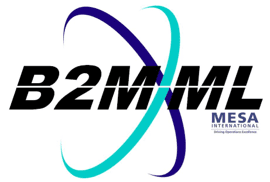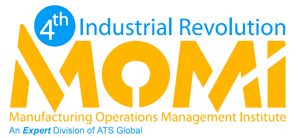B2MML & Integration Fundamentals Certificate of Competency
Course Length: Classroom and online: 8 contact hours; Post Event: 2.0 contact hours for self-study and out-course assessment test.
CEUs: 1.0 (10 Contact Hours).
Requirements: Learners must pass both In-Course (17 questions) and Out-Course (16 questions) testing with an 85% or higher and a 90% attendance rate.
Prerequisites: View MESA’s Global Education Program prerequisites
In addition, the following are recommended (but not required) for this course:
1. Completion of the MES/MOM Methodologies CoA, CoC Program or comparable experience;
2. Some knowledge of ISA-95;
3. Some knowledge of XML documents and schemas;
4. Some knowledge of ERP software functionality;
5. Some knowledge of MOM software (MES, LIMS, PDM, ….) functionality.

Course Description:
This course details the elements involved in business-to-manufacturing integration using the MESA B2MML and ISA-95 standards. The course covers the following areas:
- The typical IT environment used in integration projects and the IT tools used for integration
- A discussion on typical business process that require integration, the business terminology typically used, and how shop floor/operations system work through transactions that support the business processes
- A definition of the B2MML elements that are used in integration projects, including Process/Operations Segments, Properties, Schedules, Product/Operations Definitions, and Material
- Methods and techniques for mapping data from modern and legacy systems into the common B2MML format
- A definition of the ways to extend the basic B2MML definitions for projects
Business system to manufacturing system integration projects involve multiple business departments, IT departments, and engineering departments making them a difficult project to coordinate and execute. The ISA-95 Enterprise/Control System Integration standards and the MESA B2MML schemas are effective tools for these projects. However, effective use of these tools requires:
1. Detailed knowledge of the business and shop floor / operations processes involved in integration;
2. Knowledge of how the processes are interrelated through transactions;
3. Representing exchanged information in a commonly understood format.
As a result, MOM integration projects spend considerable time on isolated project discovery that re-defining of the operations interactions that are actually common interactions used across similar plants using similar technologies, business processes, and production processes.
IT organizations often view integration projects as just a technology problem, without an understanding of the impact that integration may have on existing manufacturing operations and their real-time work processes. To significantly reduce project time and effort, a good understanding is required of the
1. Best practice integration methods;
2. Best practice methods for integration requirements.
Upon course completion, Learner will be able to:
1. Discuss what business processes are involved in manufacturing system integration
2. Describe the mappings that must occur from business system interfaces into a standard operations interface
3. Explain transactions and transaction types required to support integration
4. Identify B2MML elements used to represent business objects
5. Describe the methods for extending B2MML
